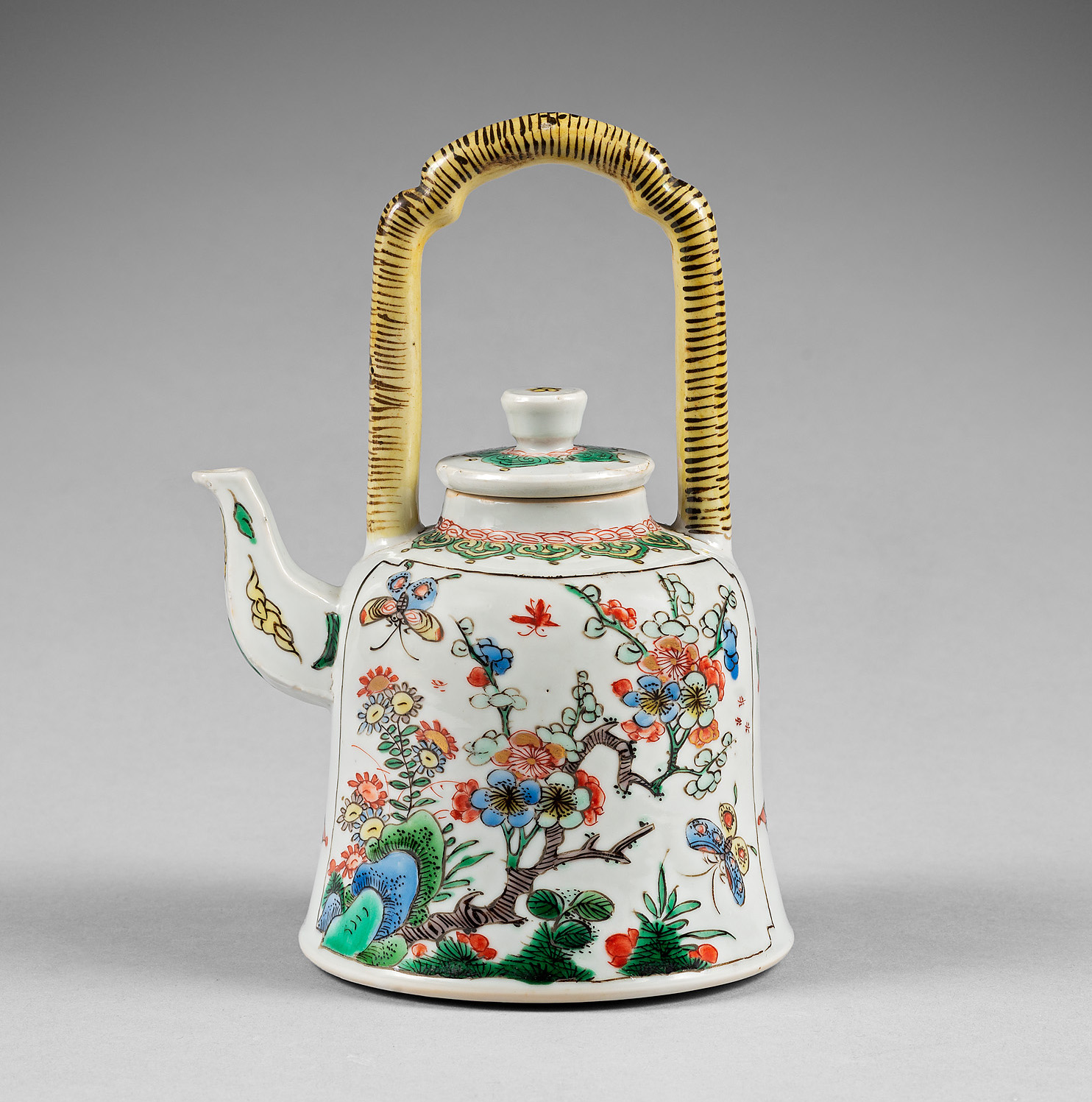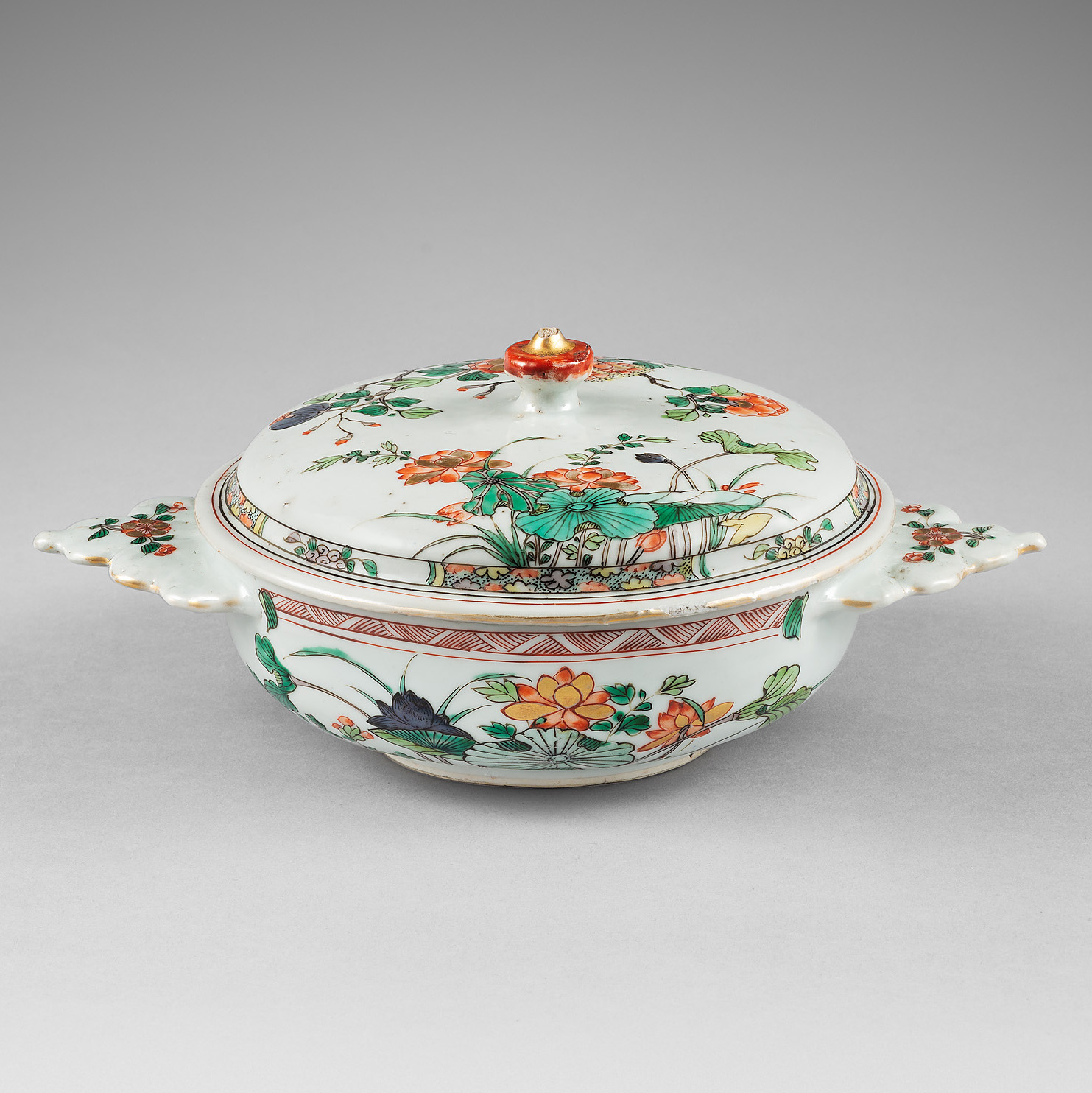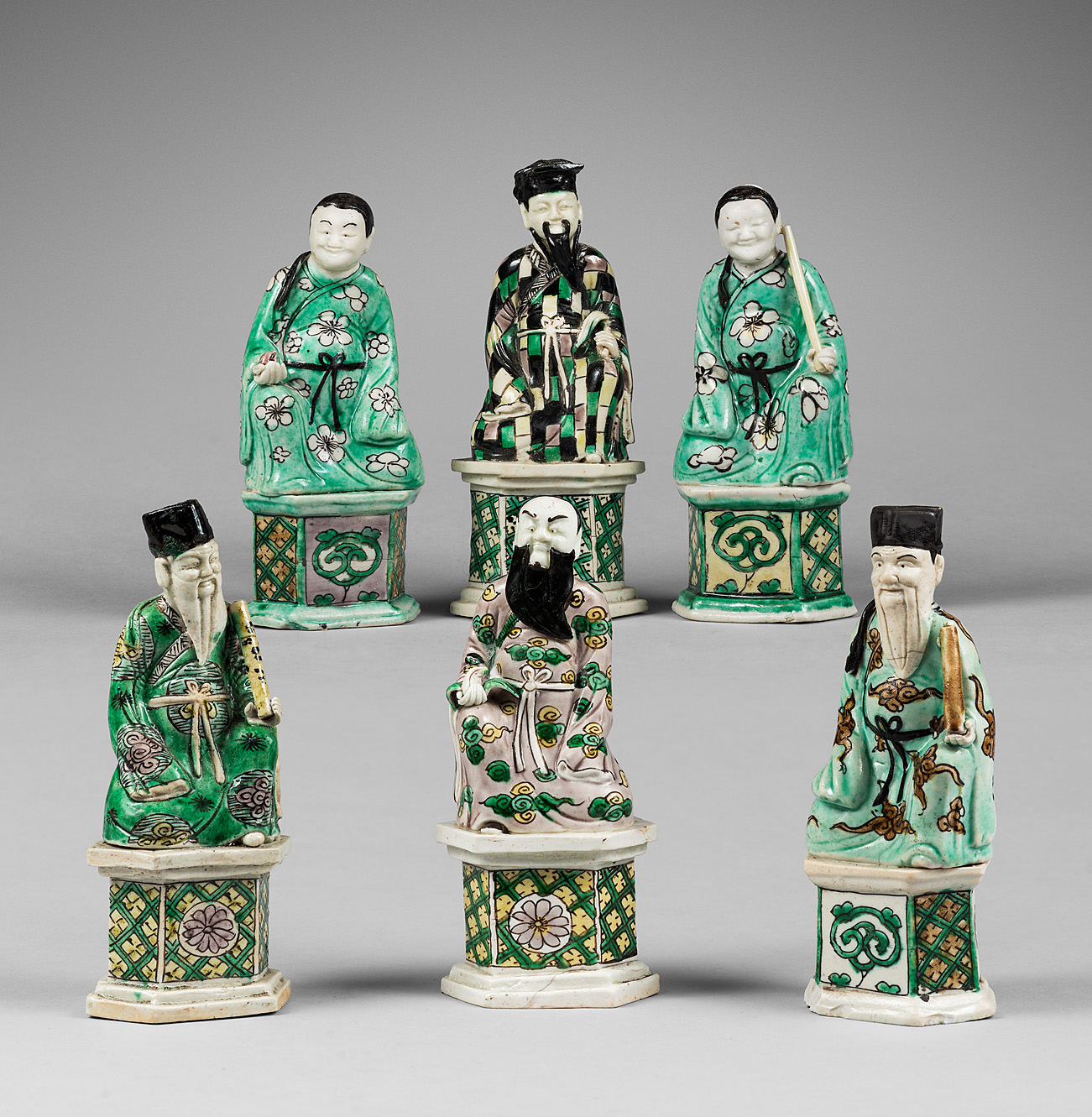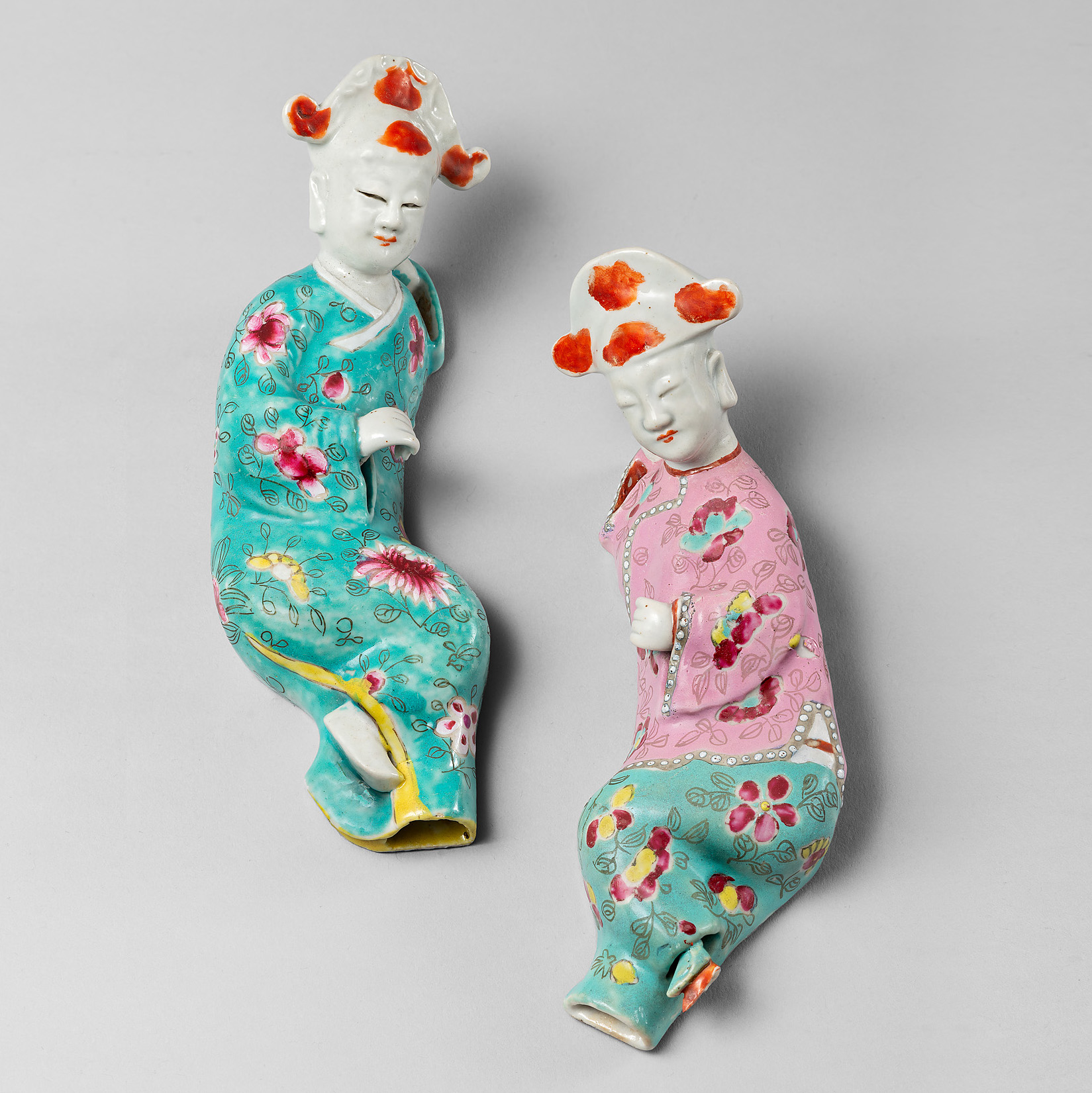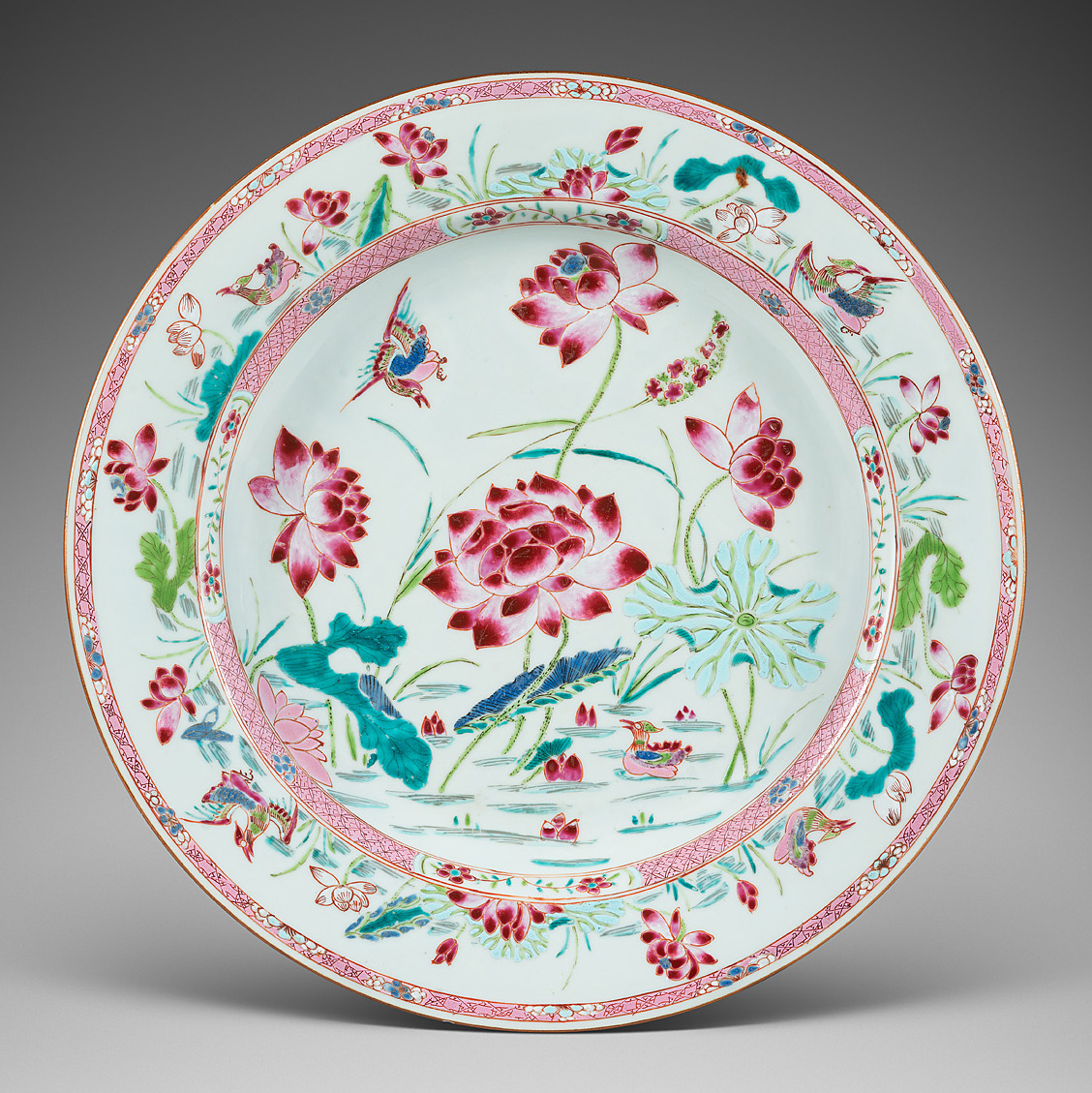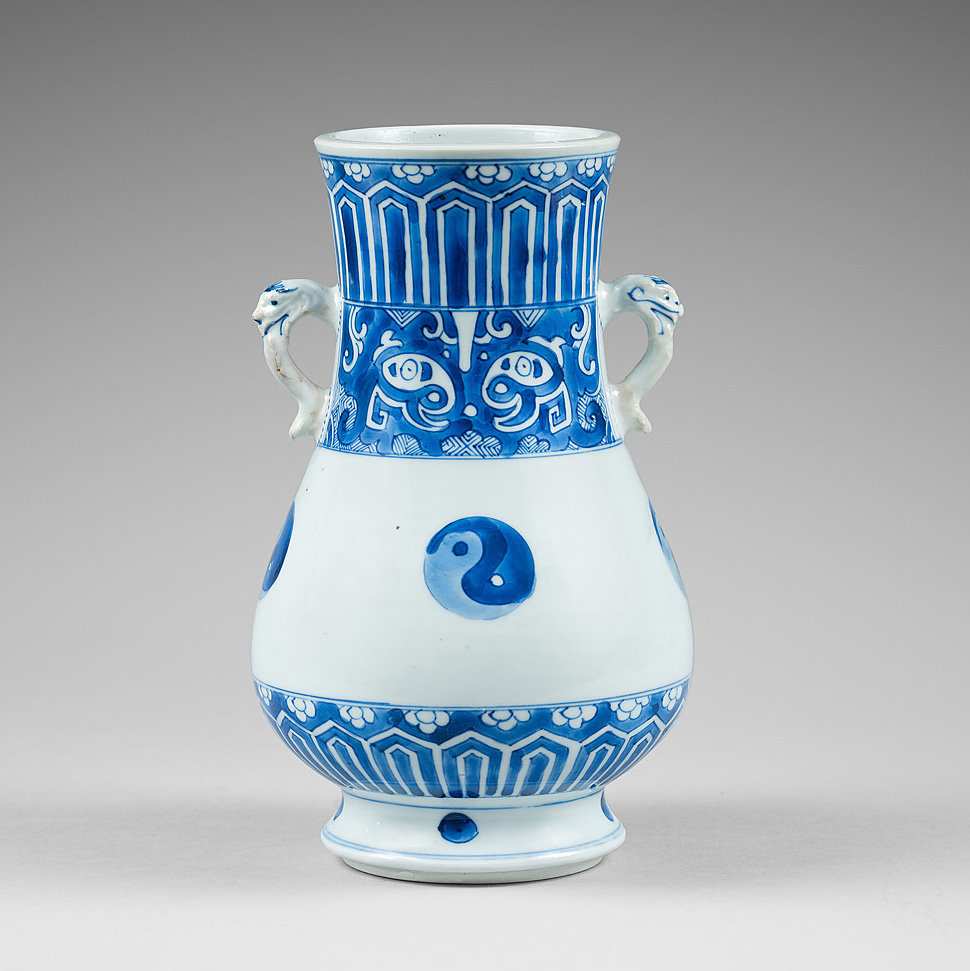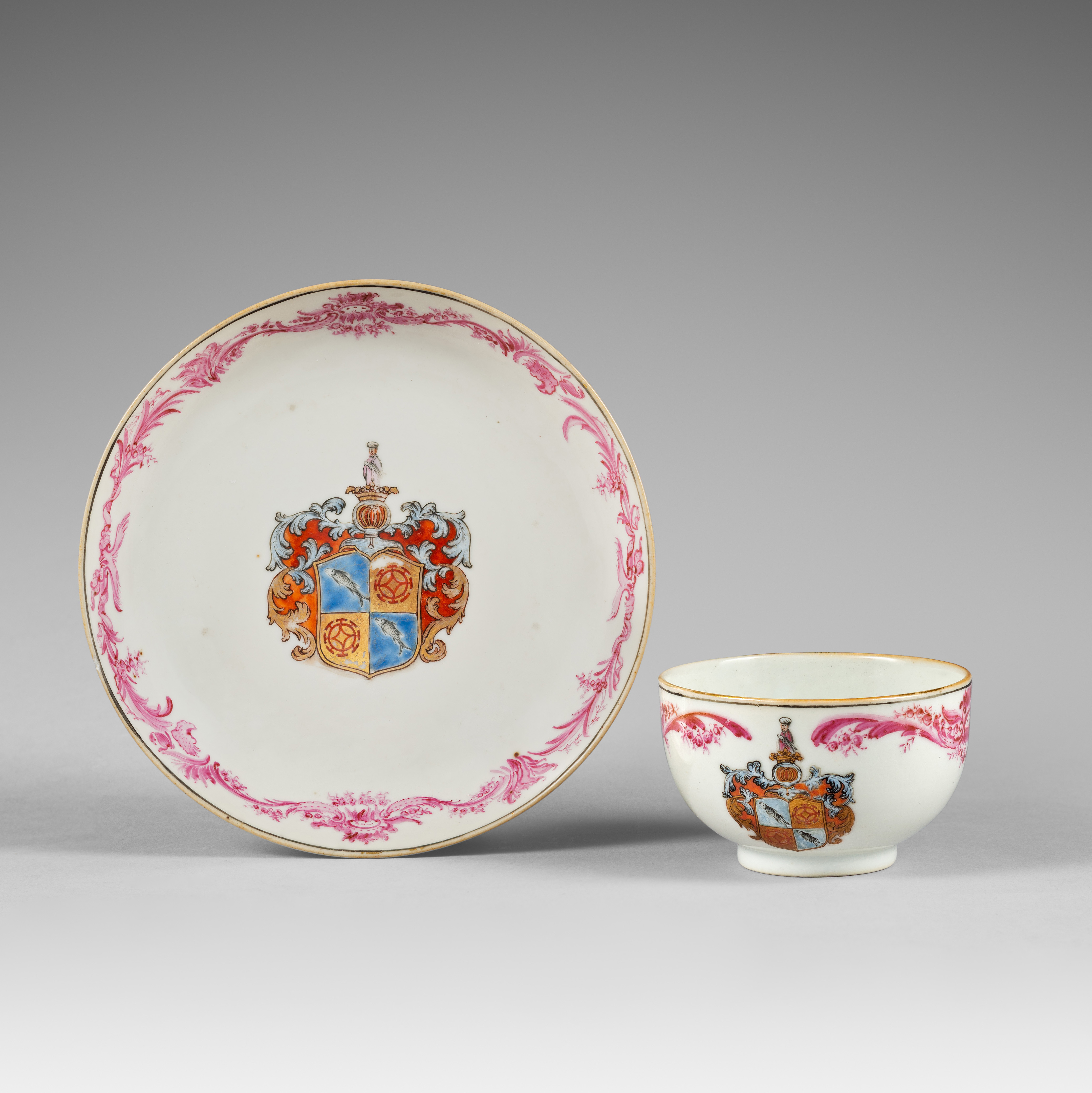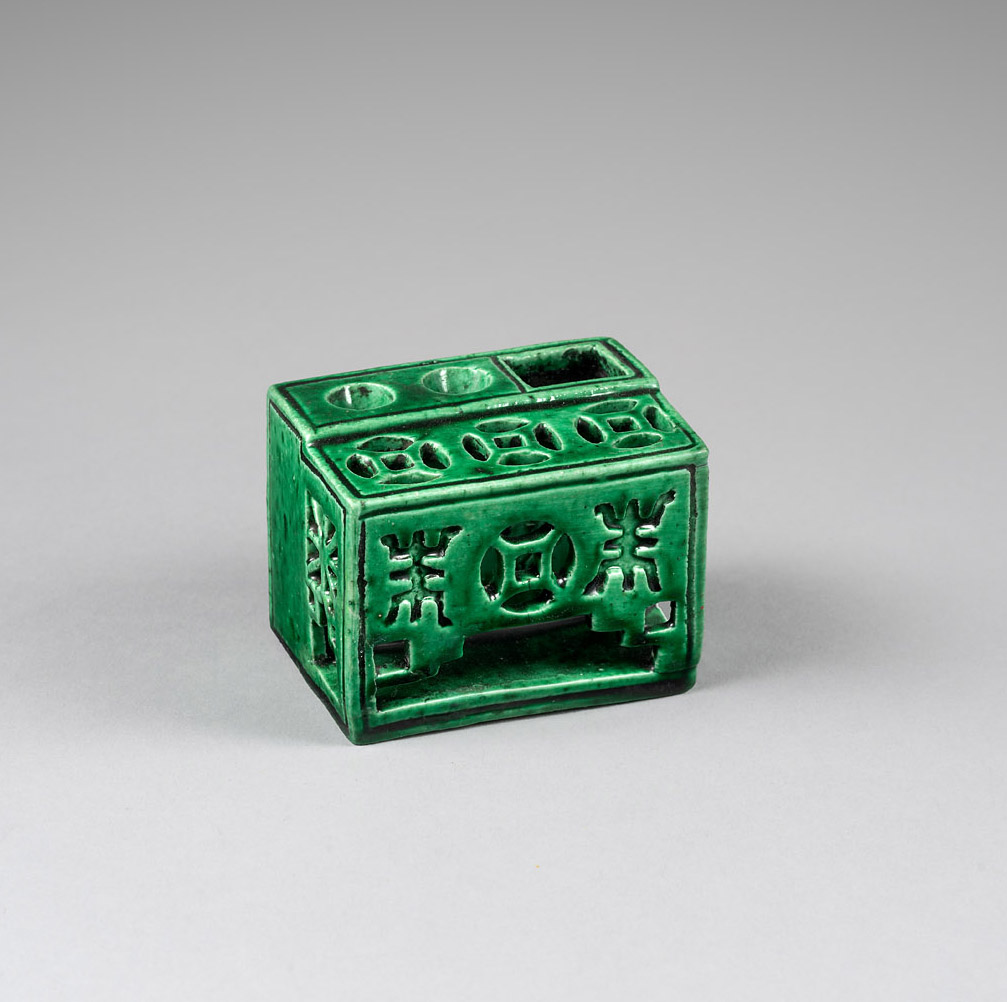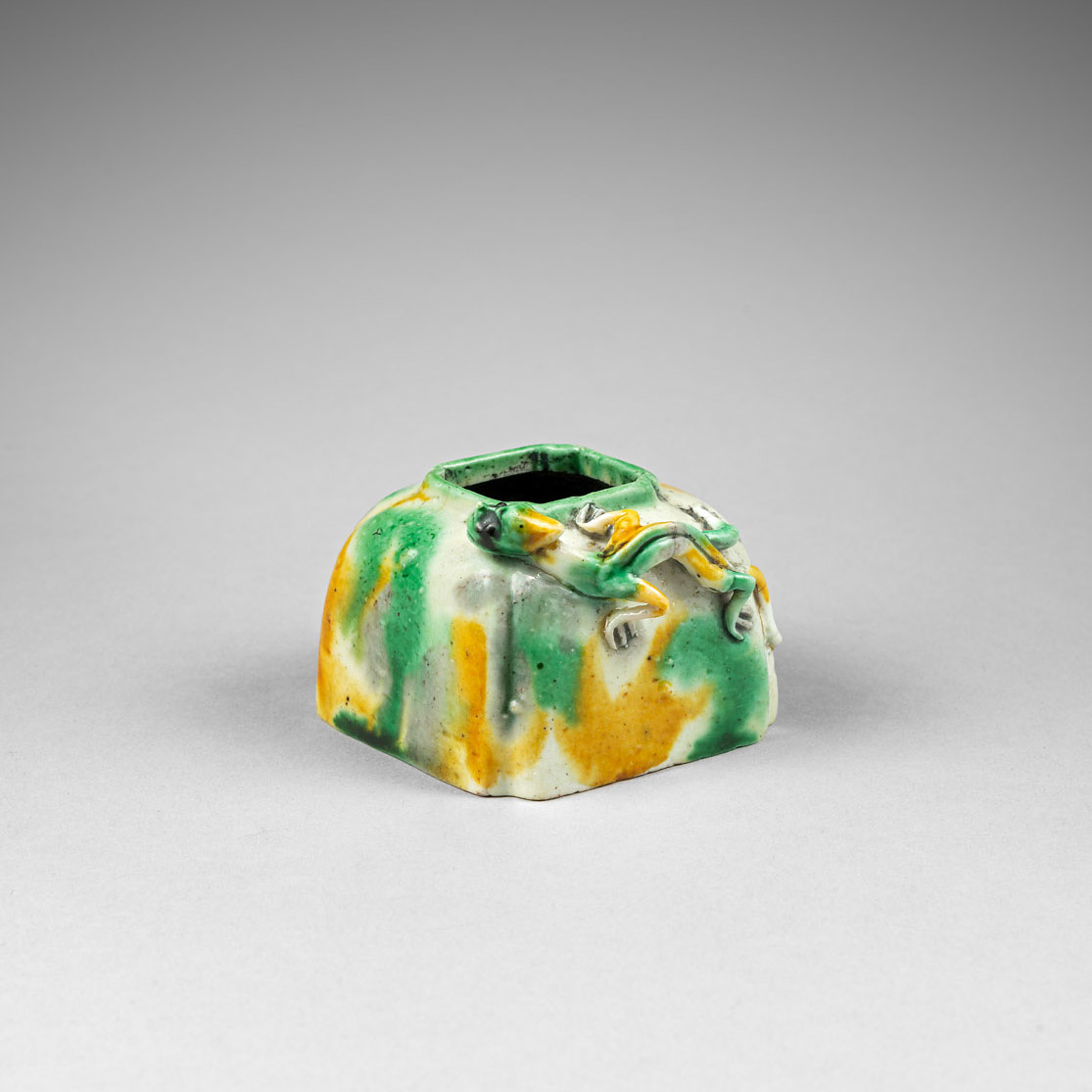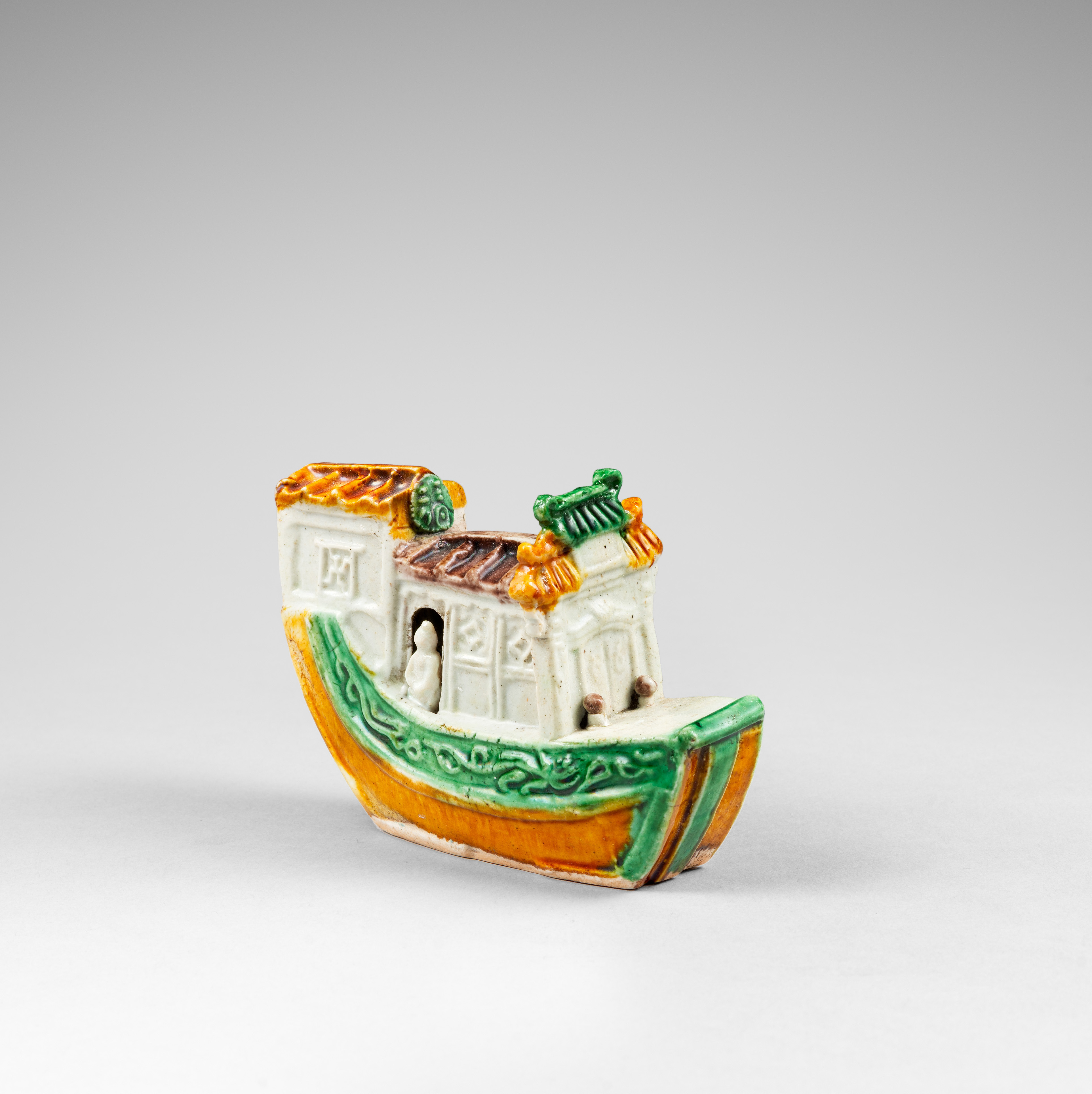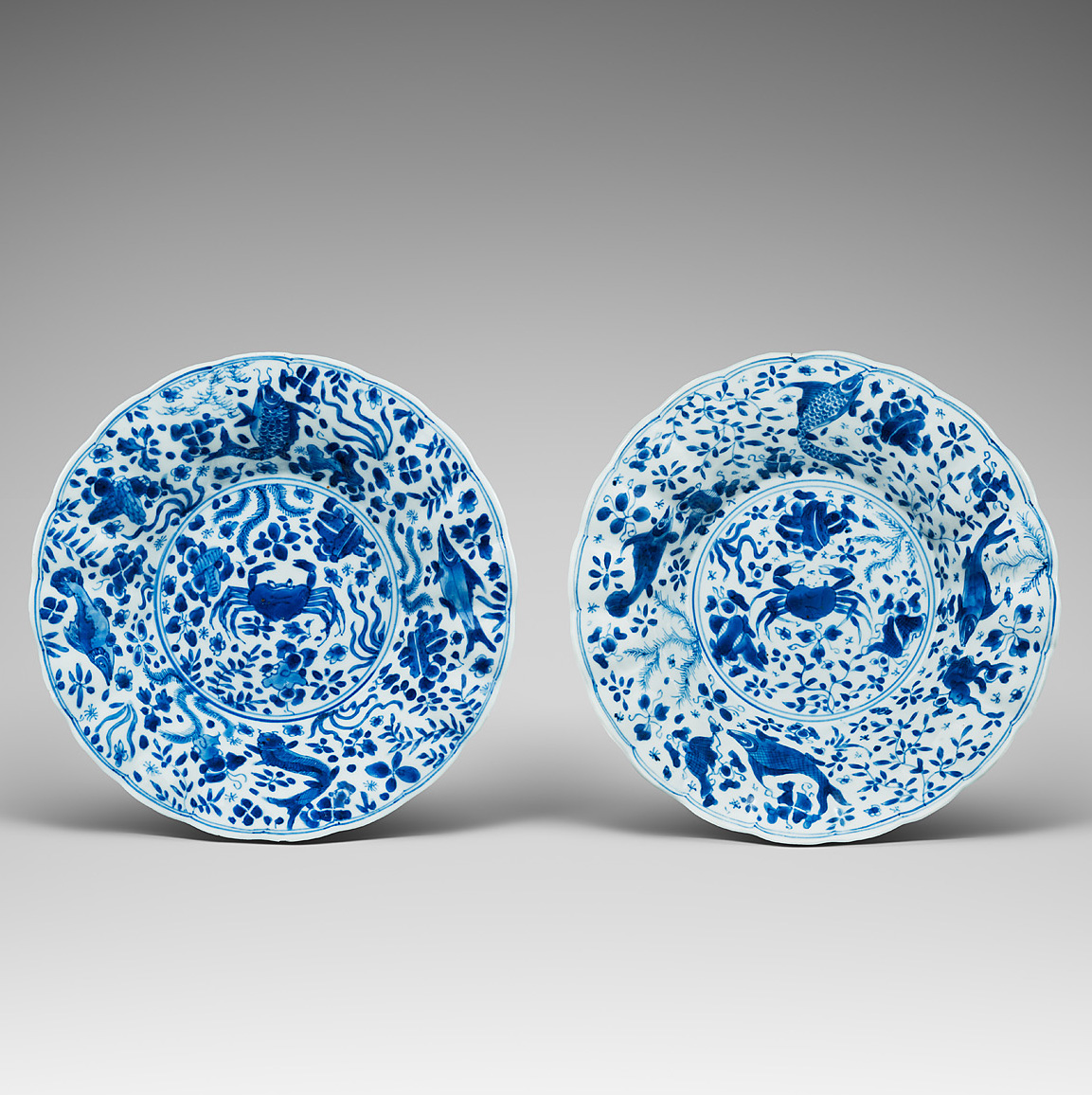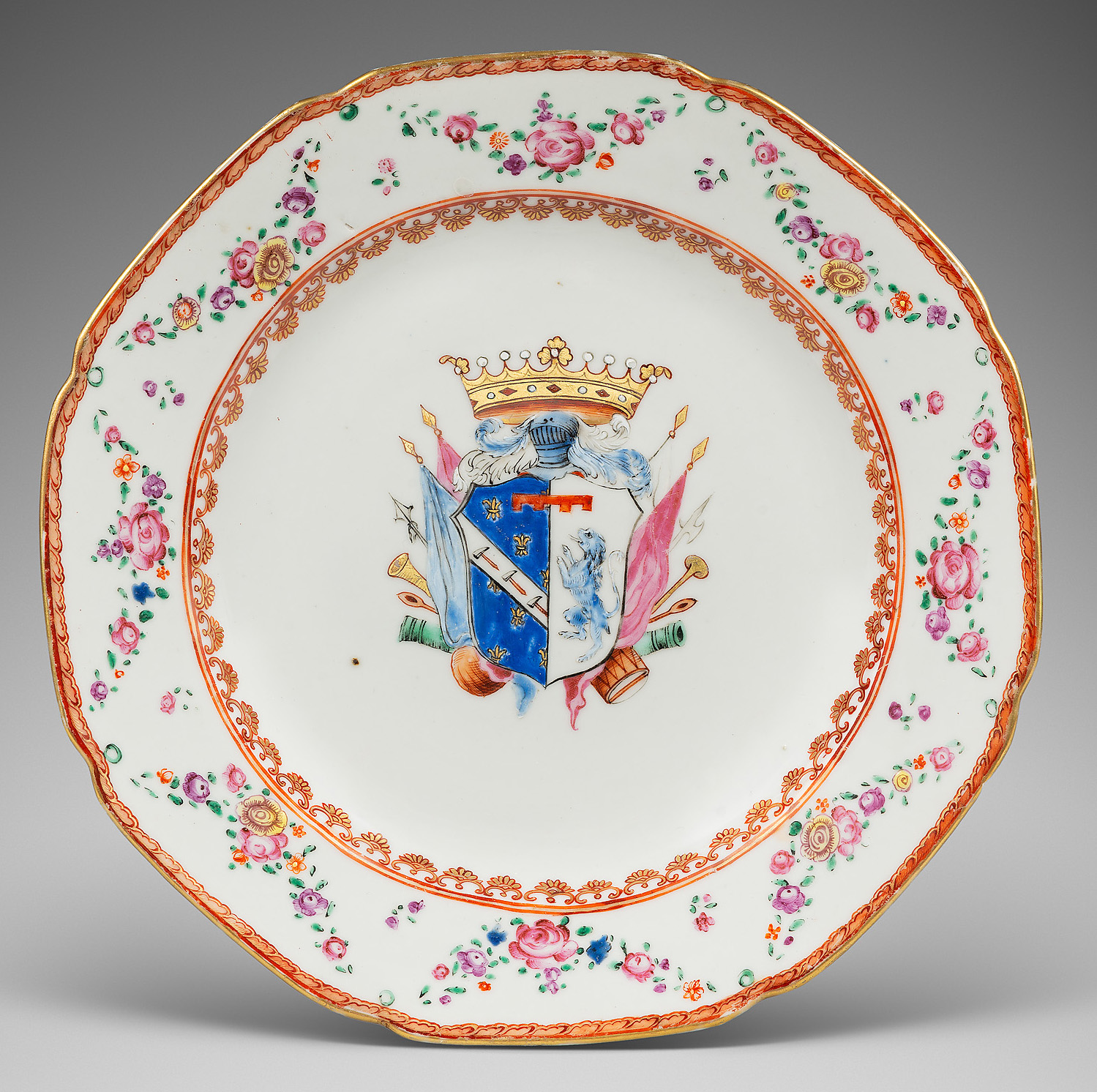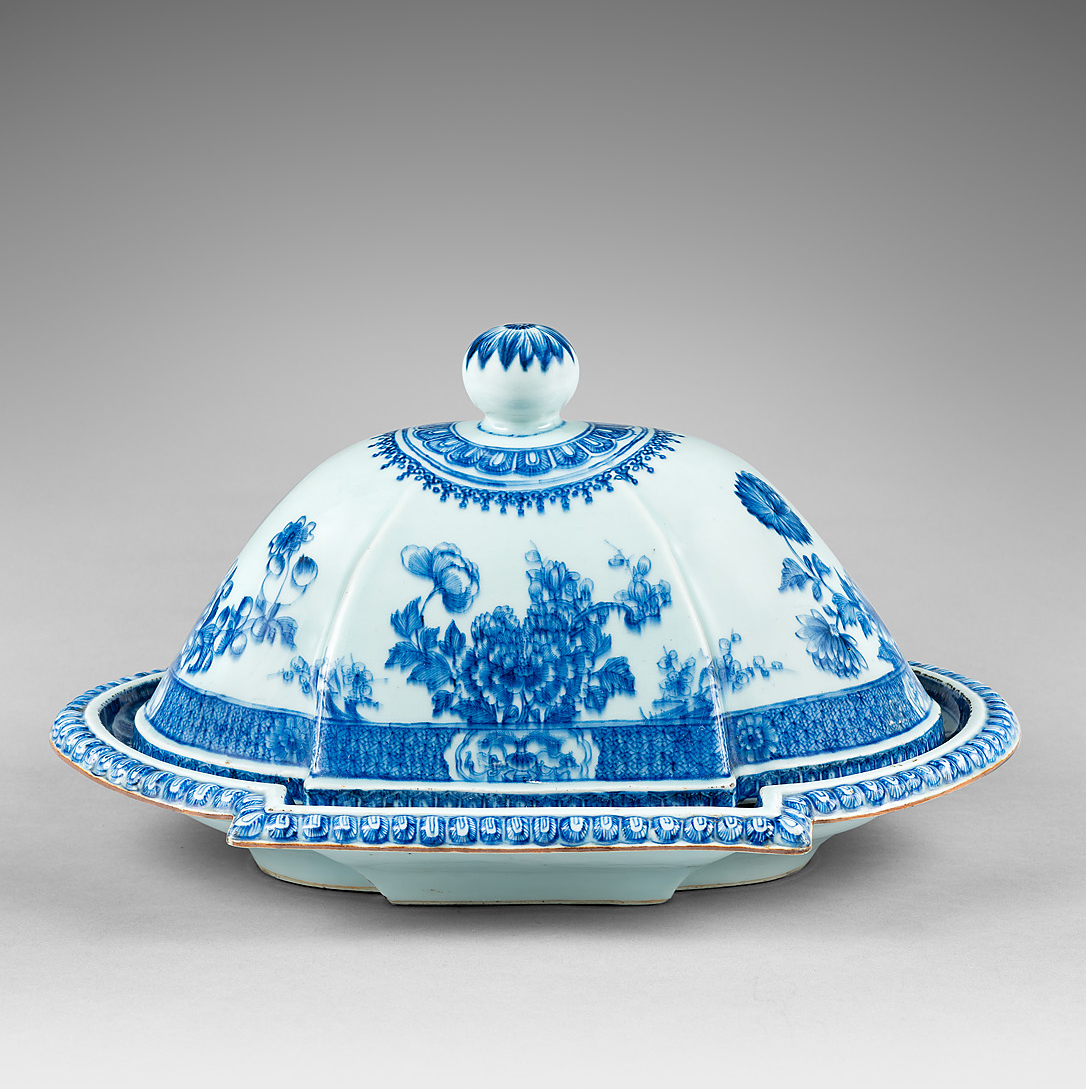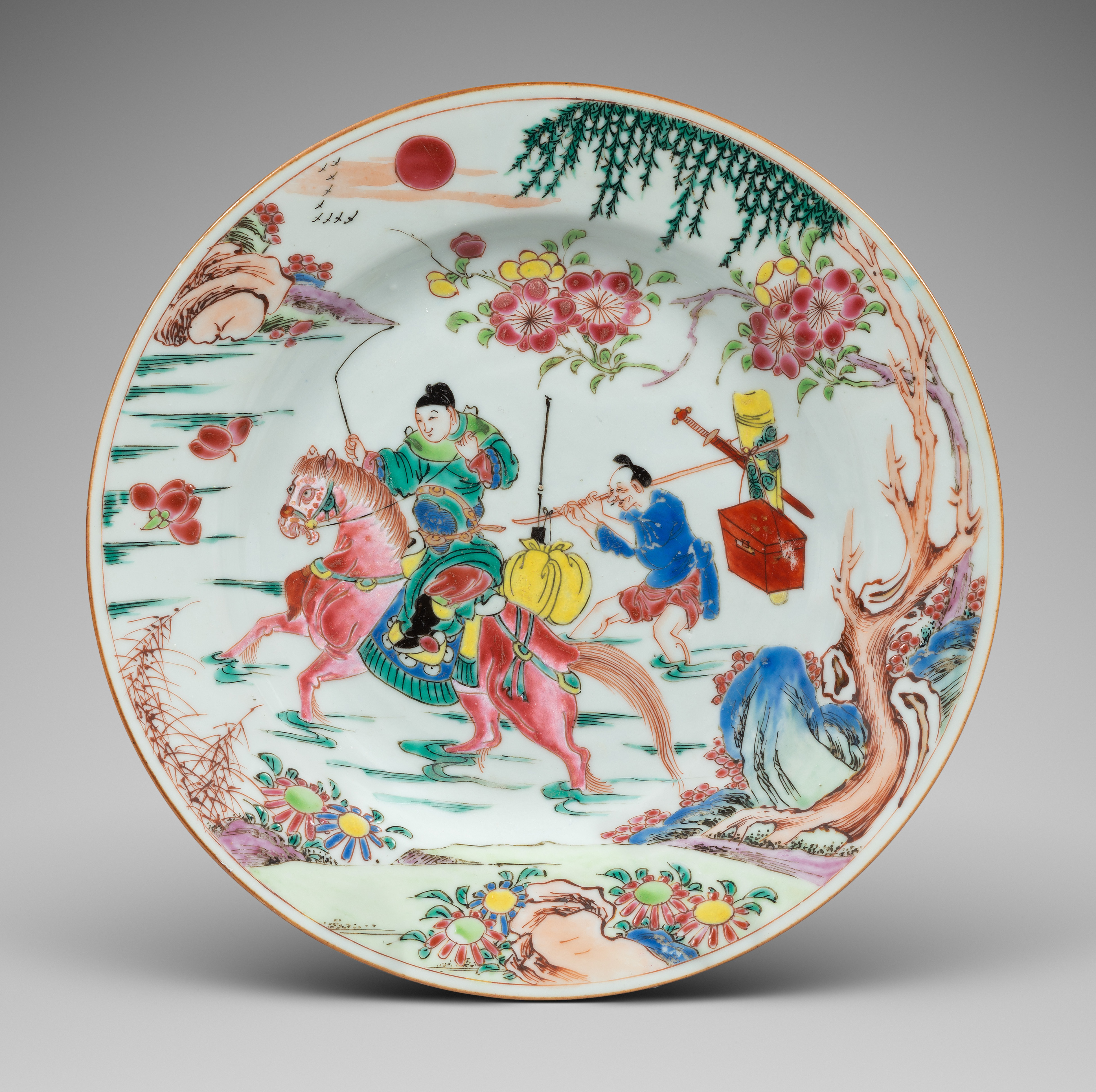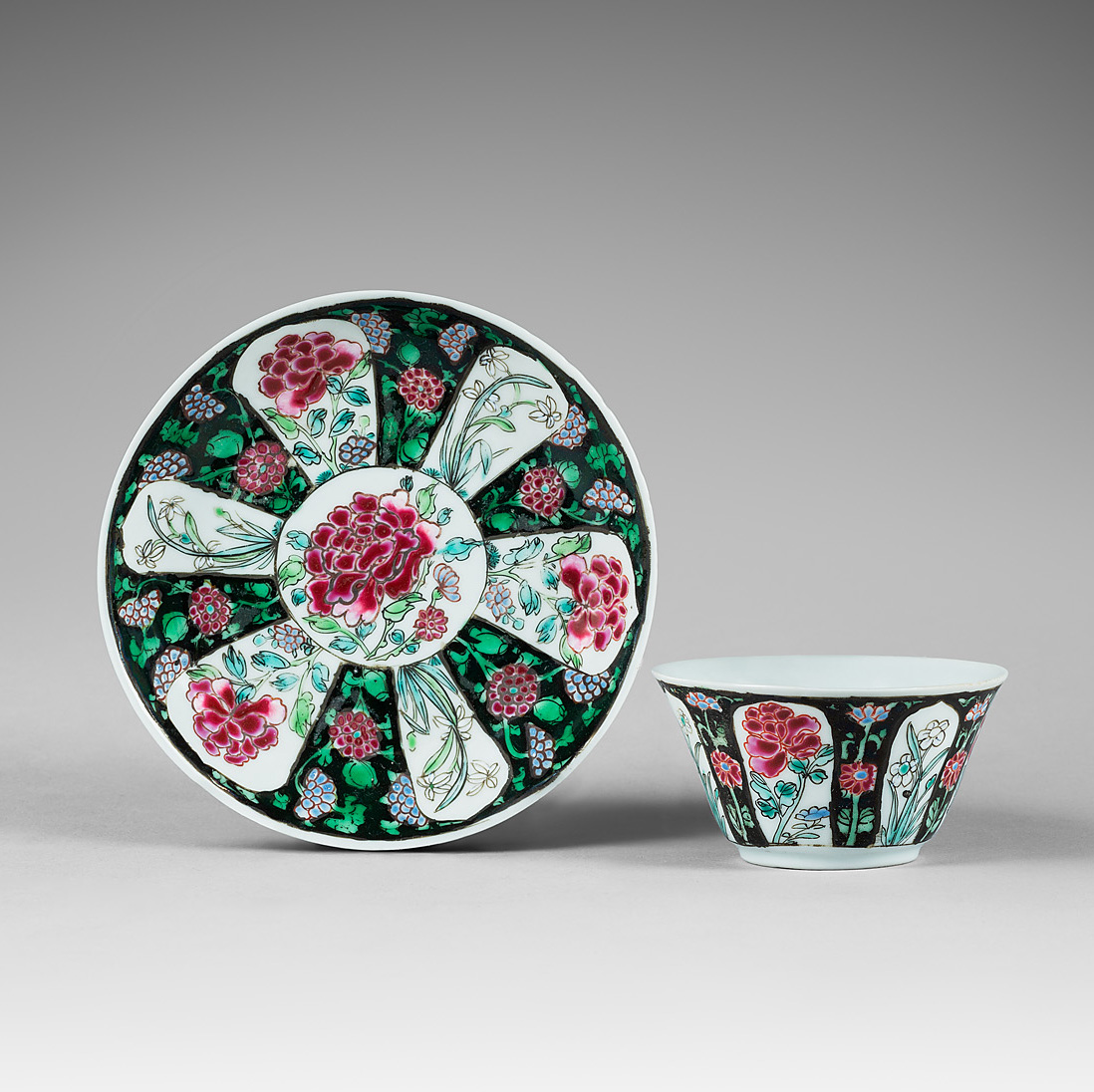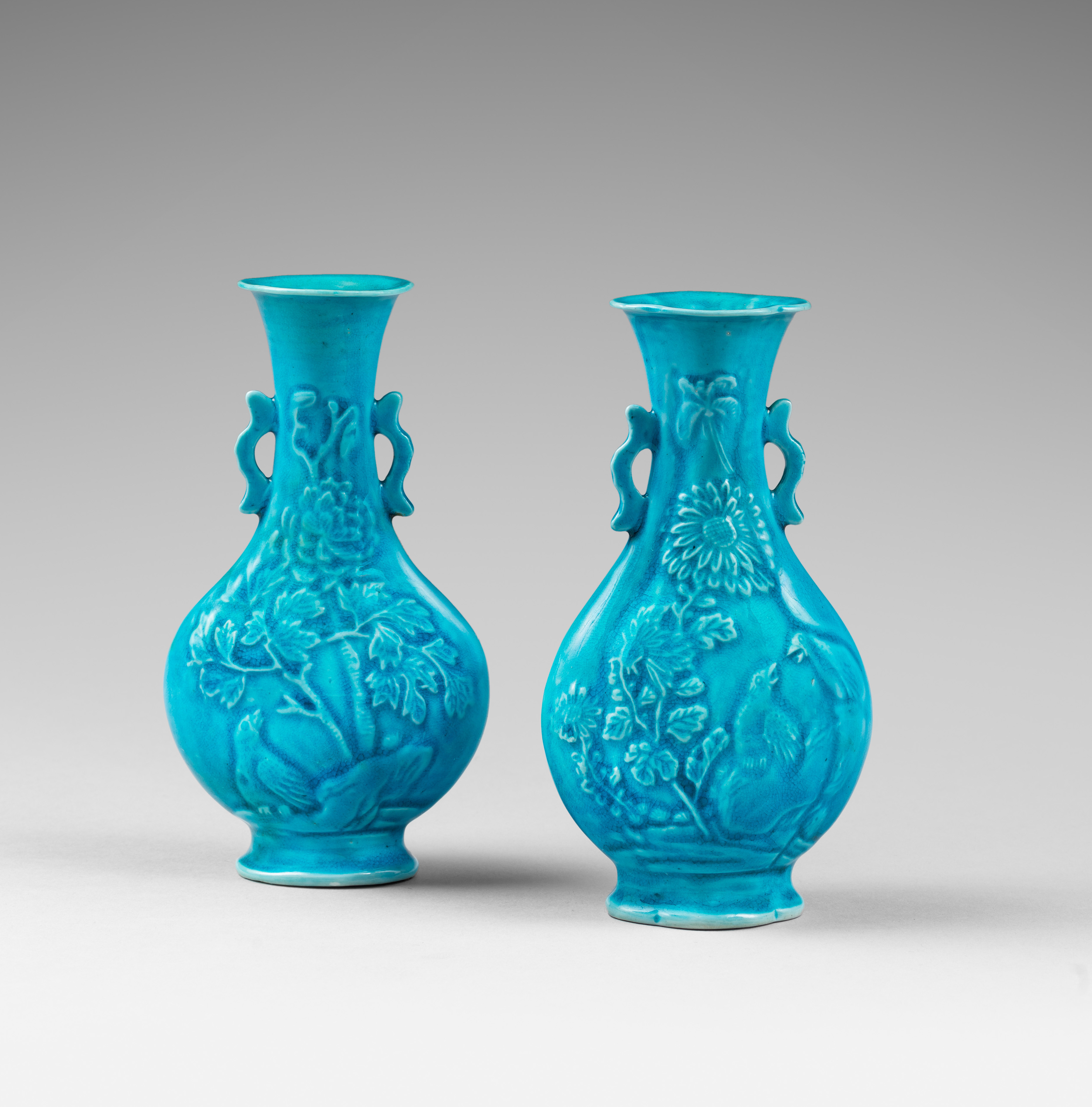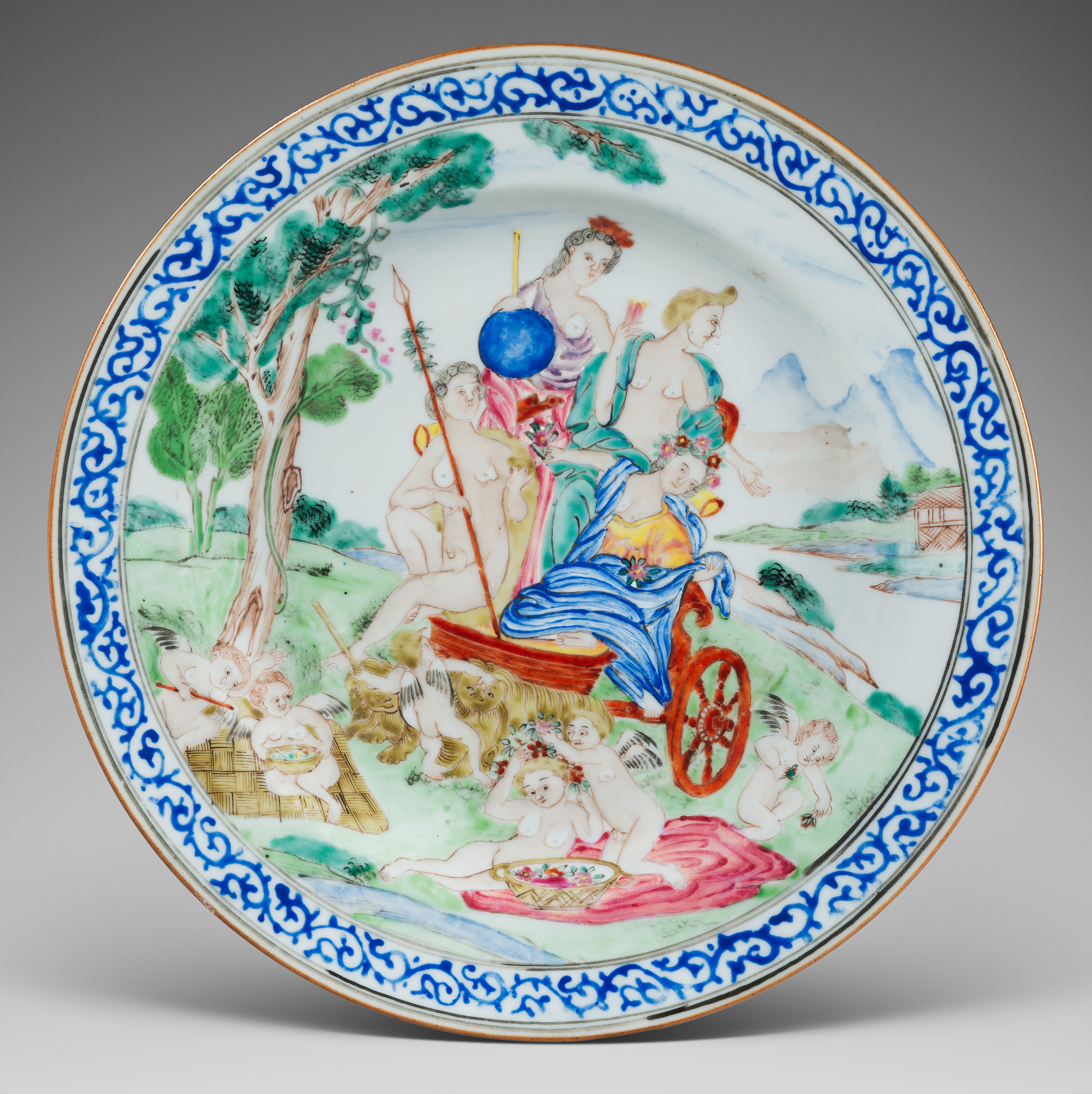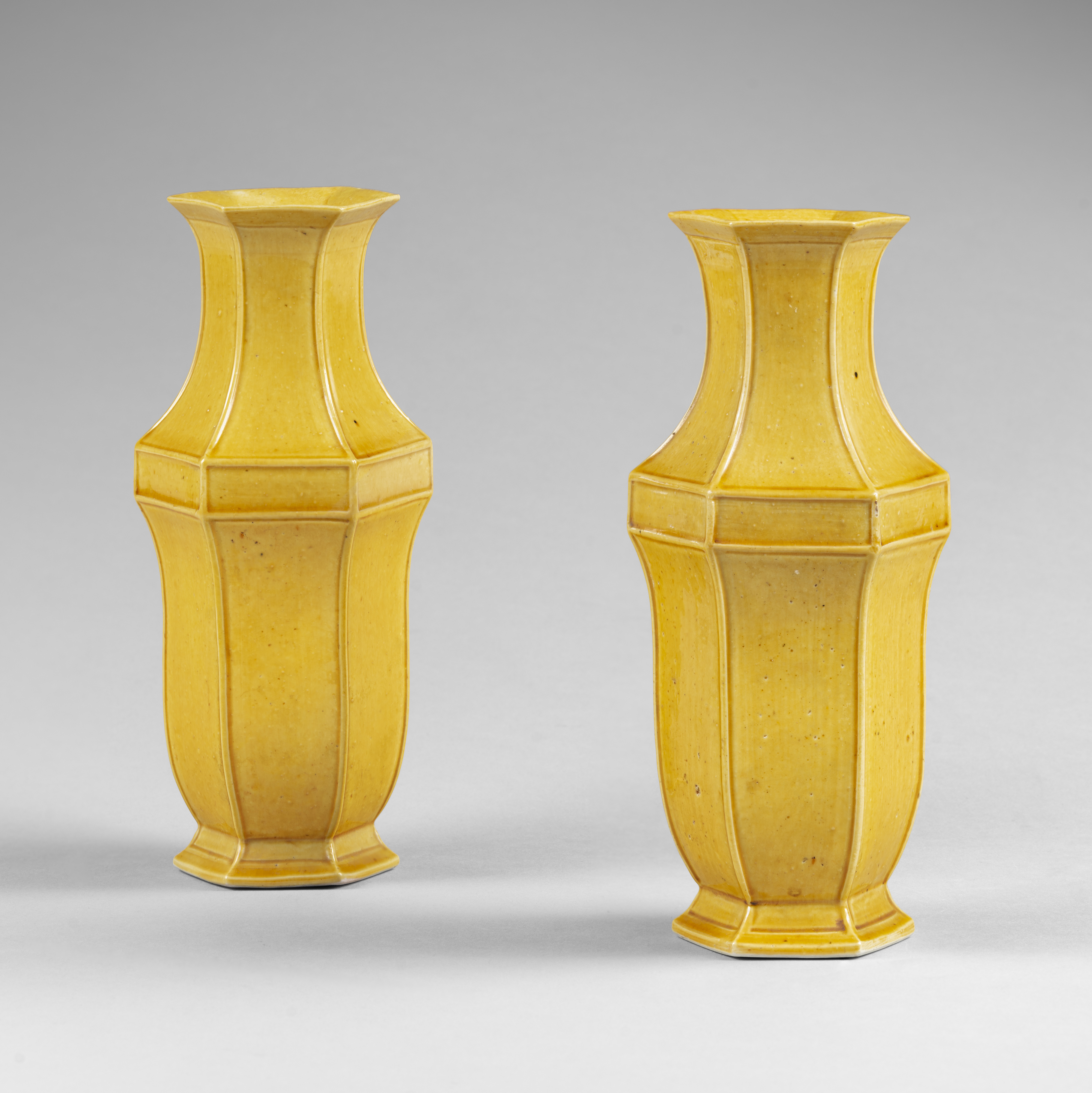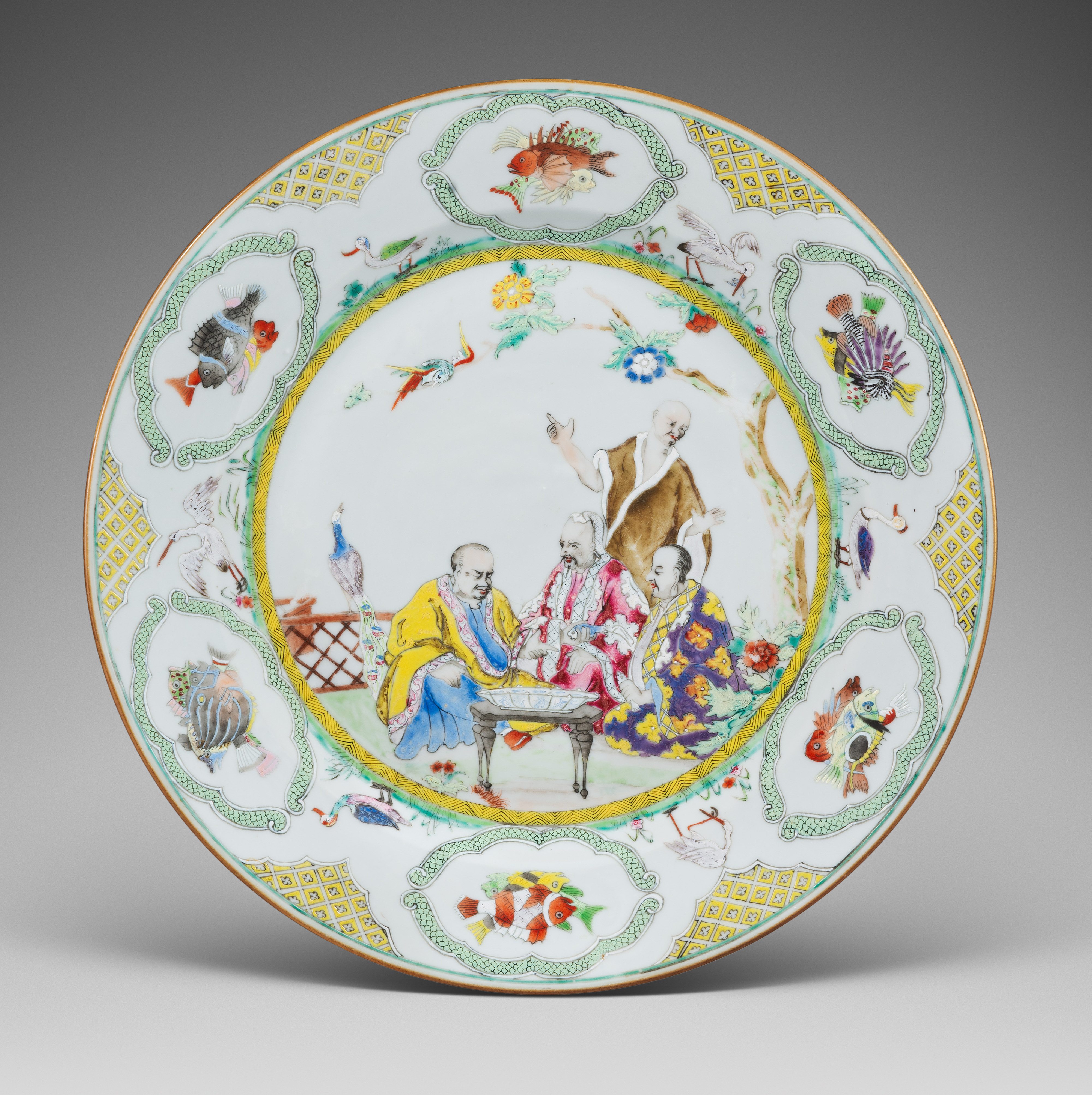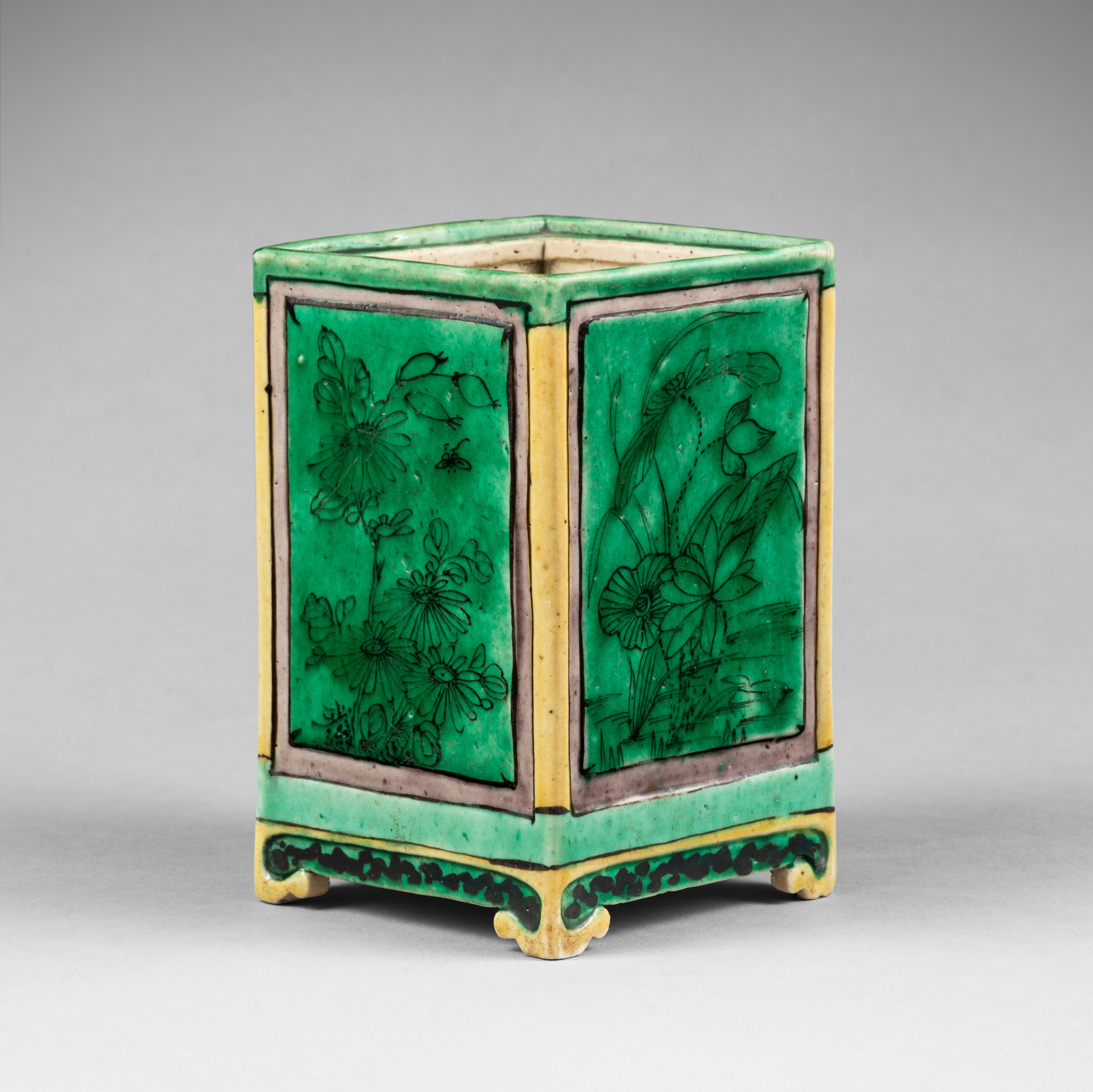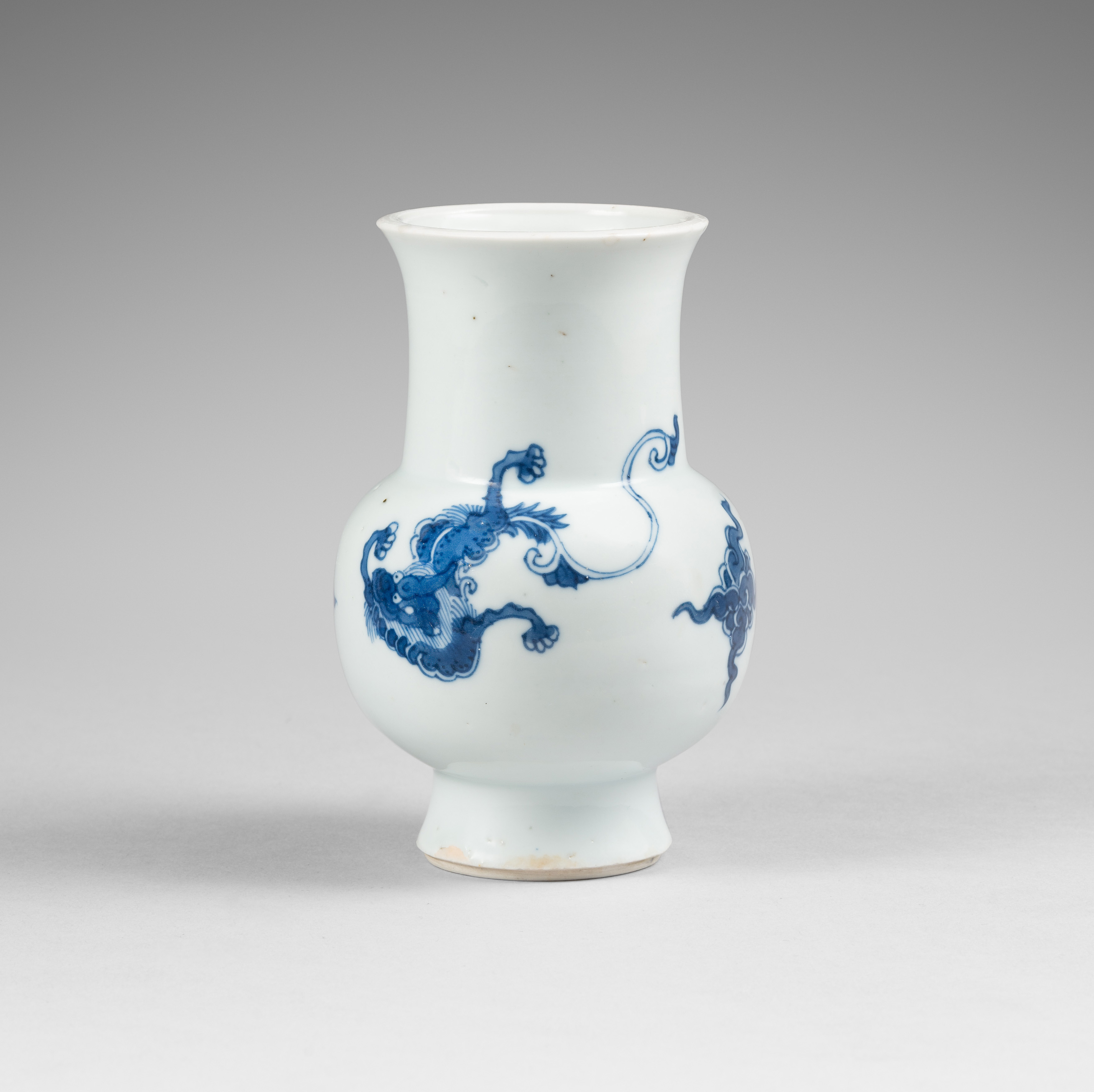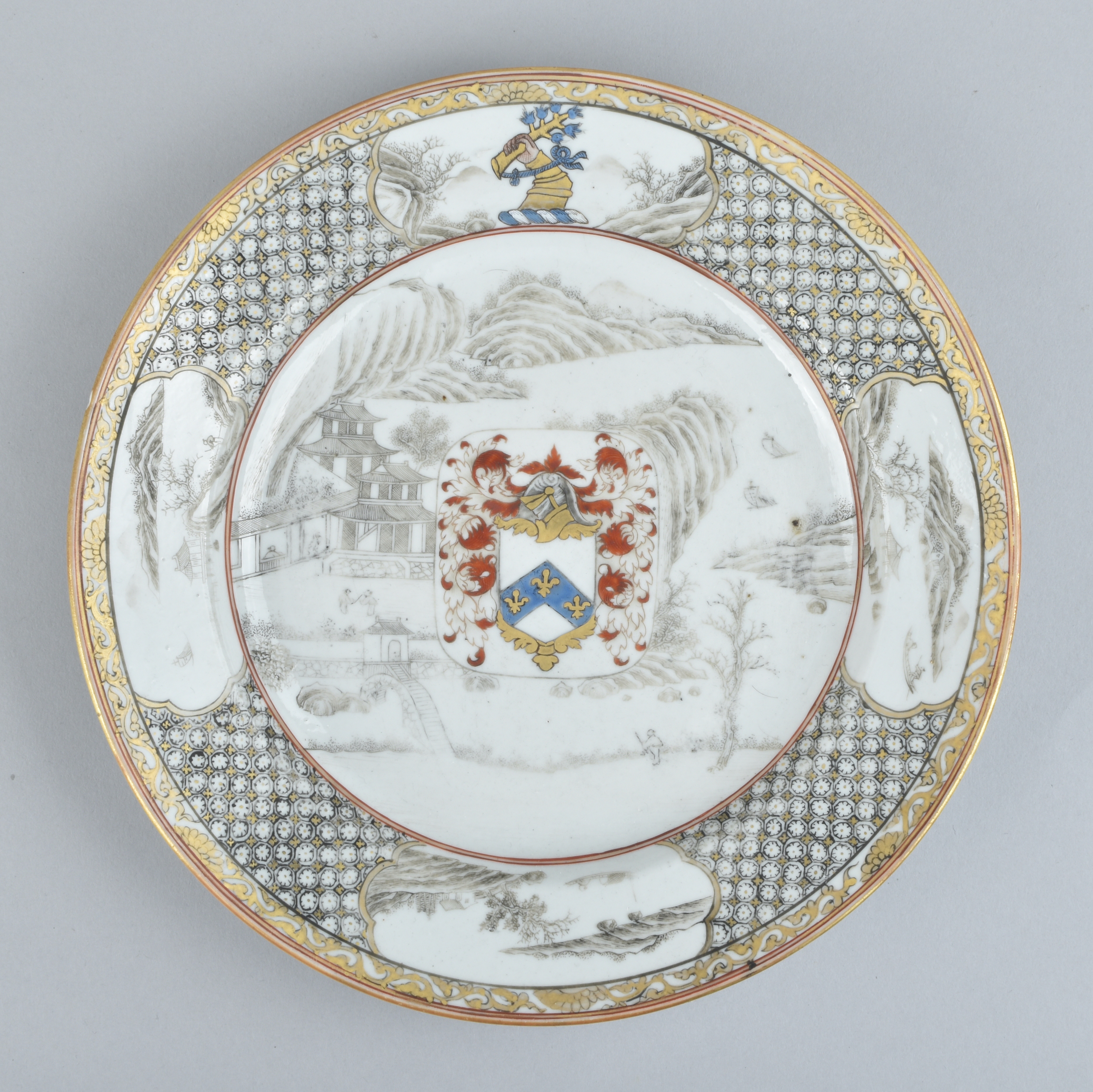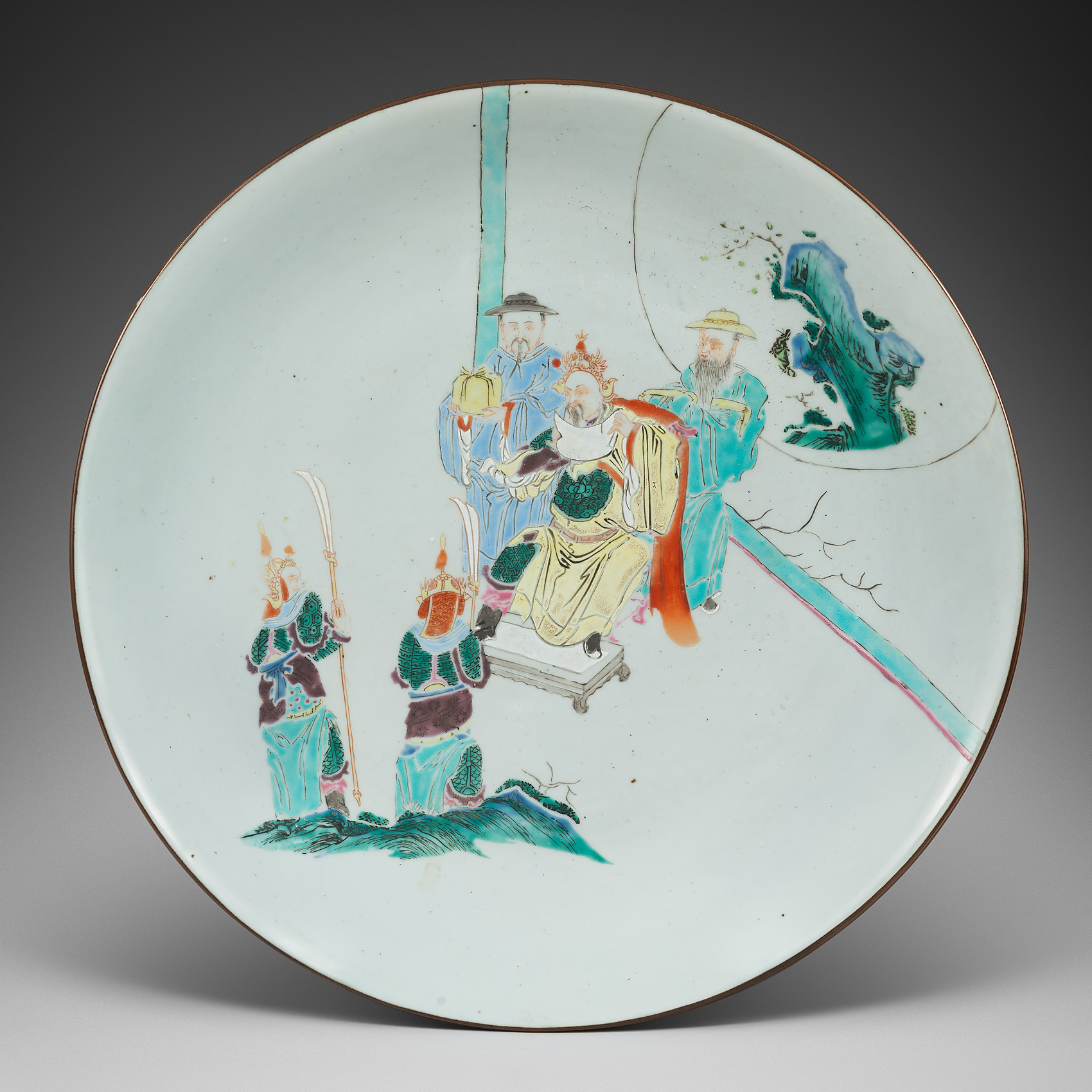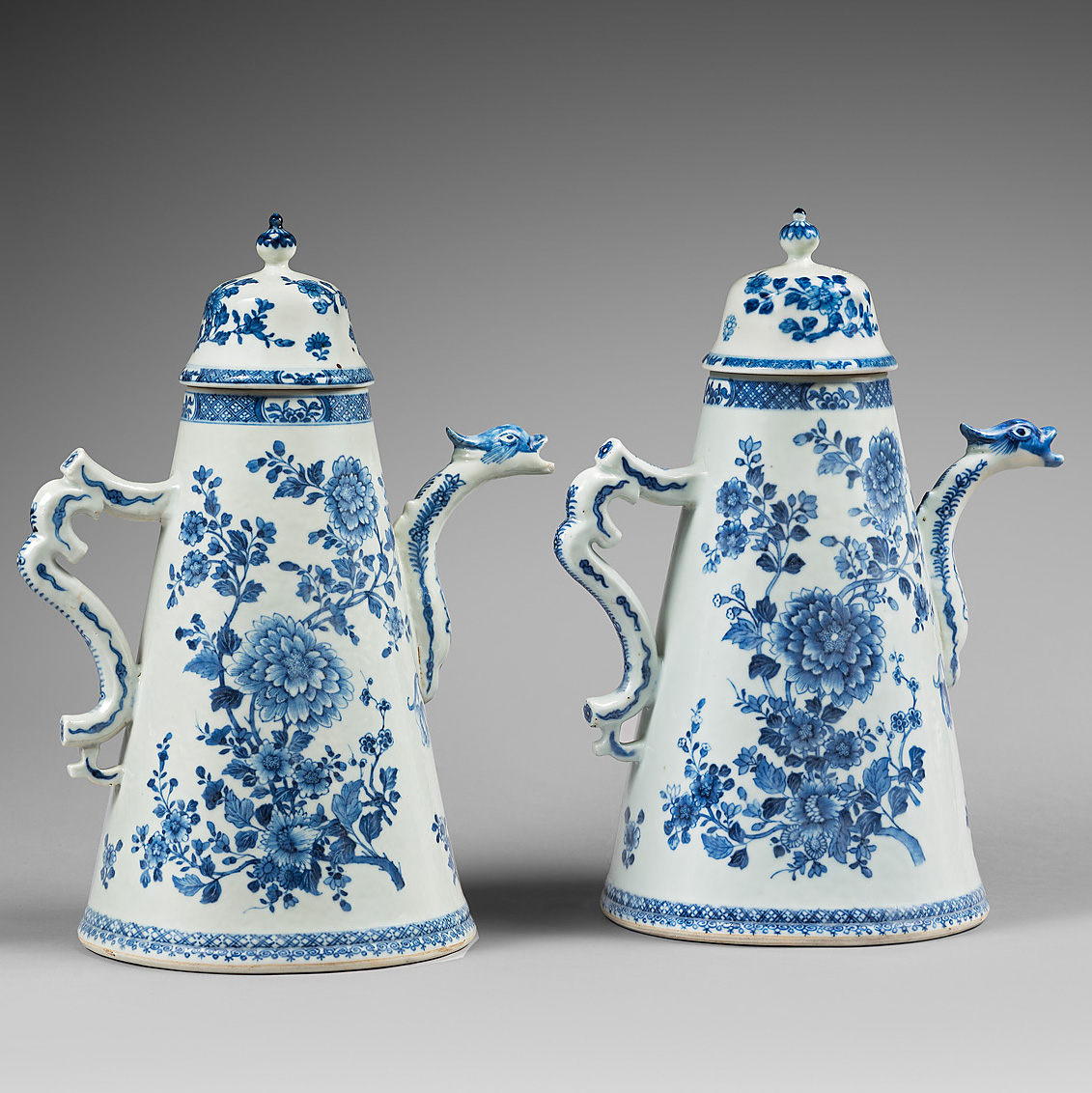
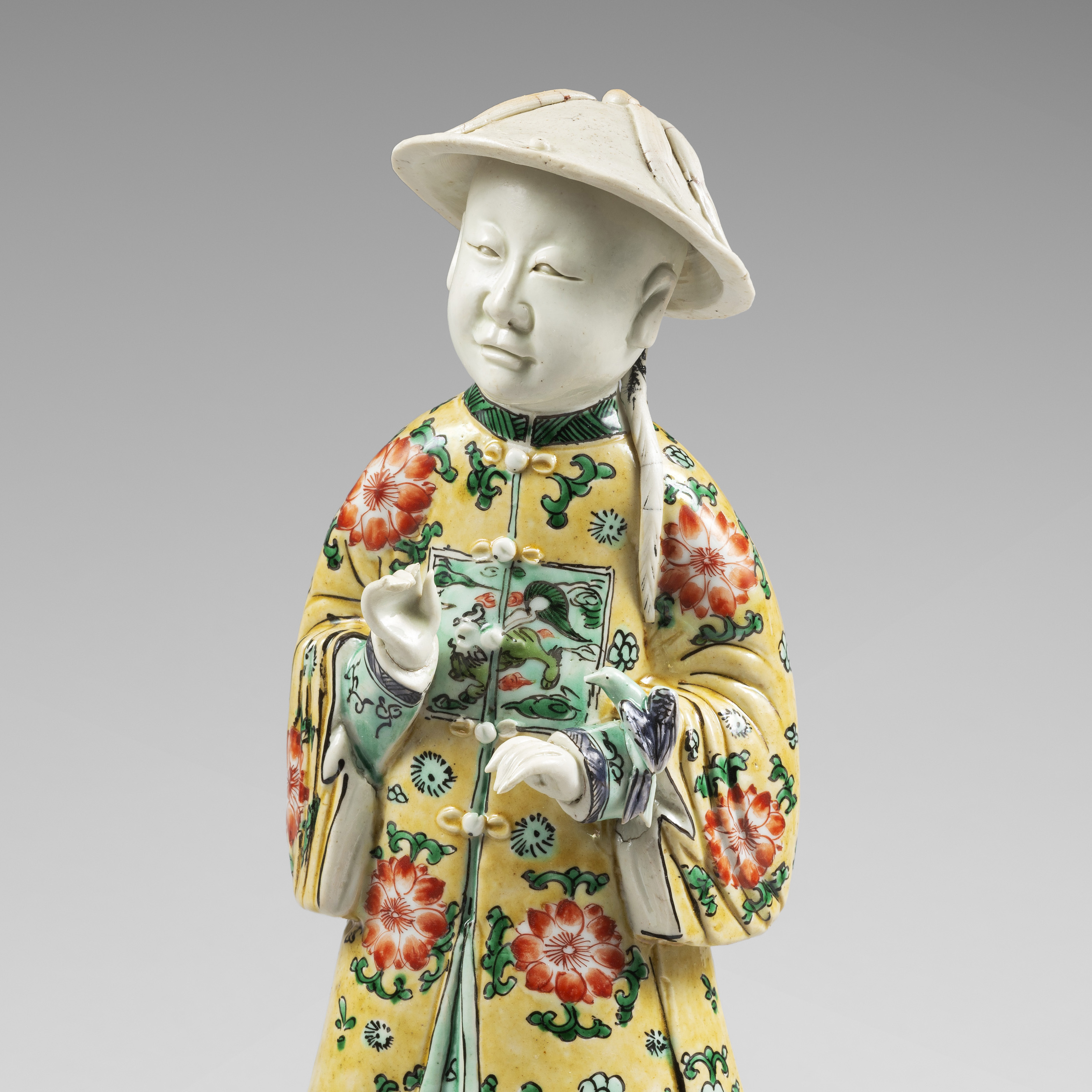
A very rare and large famille jaune figure depicting a Censor of the Imperial Court
The sculpture is modelled as a tall and elegant Mandarin with an expression of supreme confidence, it is clear this figure has no doubt whatsoever about the power and importance that his position entailed. He is dressed in famille jaune brocade surcoat (wai gua) with iron red prunus blossoms, and a famille verte robe, with iron red peonies, wearing a Mandarin hat topped with a pearl over his shaven head, with his Mandarin visible braid over the left shoulder. Importantly, we see his rank badges both on the front in two halves (so as to be able to open his garment) as well as on the reverse in a single piece, depicting a mythical Xiezhi, the symbol of Law and Justice in ancient China. The sculpture was molded in two parts and an oval whole is pierced at the back of the sculpture. There are traces of cold painting black on the plait and traces of red painting on the hat.
- Country:
- China
- Period :
- Kangxi period (1662-1722)
- Material:
- Porcelain
- Dimension:
- 13.38 in. (34 cm)
- Reference :
- D418
- Status:
- sold
Related works
We have only recorded five other figures of this very rare model depicting officials, most of them damaged:
A first figure is in the collections of the Musée Guimet, Paris (G5318, formerly in the Collection Grandidier, who acquired it from Albert Tissandier)
A second figure is in the Victoria and Albert Museum and published by Stacey Pierson in Chinese Ceramics, Victoria & Albert Museum, 2009, p. 99 (the hat was broken)
A third figure is illustrated by E. Gorer & J.F. Blacker in Chinese Porcelain and Hardstones, plate. 90 (also with the had broken)
A fourth figure, from the Leonard Gow Collection is illustrated by R. L. Hobson in Catalogue of the Leonard Gow Collection of Chinese Porcelain, 1931, plate. LXVIII (also with the hat broken)
A fifth figure, very damaged, is in a private Portuguese collection
Those figures look sometimes associated to ladies. For three examples, see:
The Jui Tang Collection (inventory 1505, acquired from A & J Speelman, London, 2004)
The Musée Guimet (G5319)
The Cleveland Museum of Art (Severance and Greta Milikin Collection 1964.195)
Notice
The famille jaune palette
The classification of Chinese porcelain with enamel decoration was done by Western collectors. It designates each “family” according to the dominant enamel. These terms were set in the middle of the 19th century by the collector, Albert Jacquemart (1808-18075), who published the book L’histoire de la céramique (Paris, Hachette, 1873). The famille jaune palette on the biscuit uses a famille verte decoration set on a yellow enamel background. This decor includes: a range of greens, red, yellow, aubergine and blue enamels (from the beginning of the 18th century). These enamels were placed on the biscuit body and were fired at 750-800°C. Enamels on biscuit have a darker and more matt tint than enamels on glaze. This decoration appears at the end of the 17th century.
The Xiezhi badge of the Censor
Badges of rank were textile badges indicating the wearers rank within the civil or military service as well as among the members of the Imperial family. They are thought to have originated during the Yuan dynasty (1279-1368). The badges displayed various species that were either real or mythical and signified the wearer’s rank. The Xièzhì is a mythical creature with often a goat-like body, lion-like manes, and a single horn on its head. The feet have paws, and while usually depicted with fur, they can have scales as well. In many ways, it resembles the qílín, the emblem of the highest military rank, with the main difference that the qílín is customarily depicted with two horns on official rank badges and has hooves.
Censors of the Imperial Court
The Censorate was a high-level supervisory agency in Imperial China, first established during the Qin dynasty (221–207 BC). During the Ming Dynasty (1368–1644), the Censorate was a branch of the centralized bureaucracy, paralleling the Six Ministries and the five Chief Military Commissions, and was directly responsible to the emperor.[1] The censors were “the eyes and ears” of the Emperor. They checked important documents, supervised construction projects, reviewed judicial proceedings, kept watch over state property, and maintained a general lookout for cases of subversion and corruption. Usually recruited from the civil bureaucracy, the censors were generally younger men of relatively low rank who were tenured for a maximum of nine years, after which they resumed their former posts. Their chief power derived from their direct access to the Emperor. Some censors, however, were punished for their overzealous criticisms of favored imperial policies, and this induced others to mute their criticisms and ignore many cases of misgovernment. The major effect of the office was to spread fear throughout the bureaucracy, preventing officials from instituting any kind of radically new or innovative policies. In our case, the skilled artist appears to have taken some artistic license when painting the robes of our figure, perhaps to make it more enticing for a wealthy European to collect, as the robes depicted are not at all accurate. The surcoat would not have been yellow but instead would have been black or indigo and would not have been decorated with flowers. The bottom of the dragon robe under the surcoat would have shown the deep sea (with either straight or slight curved lines) and waves. The bottom would not show flowers, and it is very unusual for a dragon robe to be green, as officials wore blue dragon robes.


